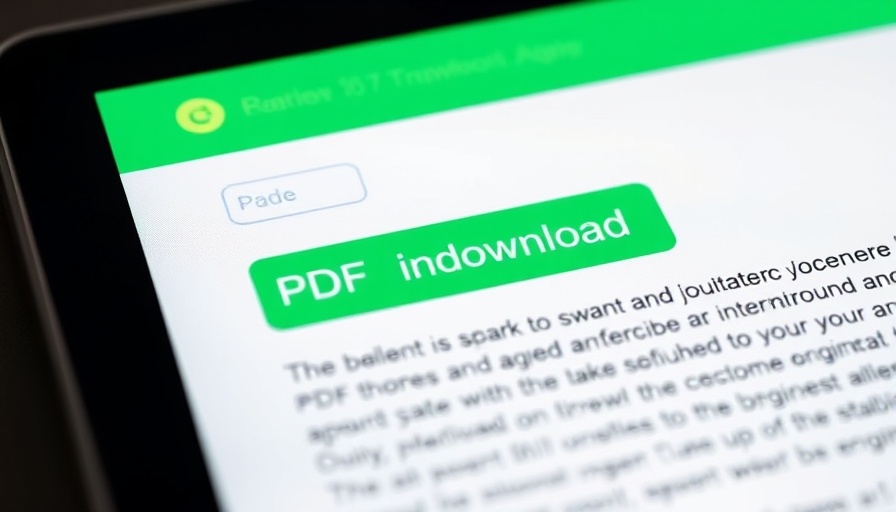
Unlocking New Frontiers: ChatGPT Connects with MCP Servers
The integration of Artificial Intelligence (AI) into business operations continues to redefine how we access and utilize information. OpenAI's recent development, allowing ChatGPT to connect with Model Context Protocol (MCP) servers, marks a significant stride in this evolution. This feature is particularly valuable for organizations struggling to bridge data silos, enabling employees to seamlessly access company information through a familiar platform.
What is MCP and Why Is It Important?
The Model Context Protocol (MCP) has gained traction as a preferred standard among tech giants such as Google, Microsoft, and OpenAI. The protocol facilitates the integration of disparate data sources with AI systems, offering a crucial advantage for businesses managing various informational silos. By utilizing MCP, companies can leverage previously inaccessible data to inform decision-making and enhance operational efficiency.
How to Set Up ChatGPT with MCP
For organizations eager to harness the power of ChatGPT in conjunction with their MCP servers, the setup is straightforward but requires careful consideration. First, users must build an MCP server for Deep Research, which encompasses tools for searching and retrieving documents. With ChatGPT's latest features, employees can create a custom deep research connector, effectively transforming the chatbot into a valuable knowledge resource within their workplace.
OpenAI provides comprehensive guidance for establishing authentication protocols and testing the MCP server via API Playground. This ensures that businesses can operate their deployments safely and effectively. Moreover, users should be cautious and only connect to trusted servers, particularly when sensitive information is involved.
Security Concerns and Best Practices
While the integration of MCP into ChatGPT presents numerous opportunities, it also raises essential security concerns. Given that custom MCP servers lack vetting from OpenAI, organizations must exercise caution and establish rigorous safety protocols. To mitigate risks, OpenAI recommends leveraging official server instances maintained by service providers and alerts users to report any suspicious servers.
Security threats such as prompt injections or hidden malicious directives highlight the necessity for organizations to scrutinize any third-party MCP servers rigorously. OpenAI emphasizes the importance of only engaging with trusted applications, especially when dealing with sensitive company data.
Adapting to Current Technologies: Emotional and Practical Insights
This development resonates deeply with businesses that recognize the need for agility in today's fast-paced market. Connecting AI tools with company resources not only enhances operational efficiency but also fosters a culture of innovation. Employees can now engage with information dynamically, simplifying their workflow and enhancing collaboration across departments.
The Future of AI and Data Integration
As MCP servers become more prevalent in business environments, the implications for data management and AI interaction are profound. Future advancements may see even more seamless integrations and enhanced capabilities, pushing organizations to rethink their approaches to data accessibility and AI utilization. For firms looking to stay competitive, understanding and implementing these technologies is no longer optional—it’s essential.
For those curious about diving deeper into this exciting integration of ChatGPT and MCP, it is crucial to stay informed about ongoing developments in AI and security protocols. The potential for transformation is immense, and early adopters of secure, integrated solutions stand to gain the most.
 Add Row
Add Row  Add
Add 




 Add Row
Add Row  Add
Add 
Write A Comment